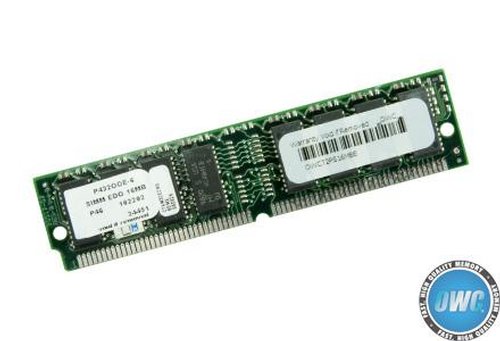

In addition to the upgrade on our trading system in August 2018, we have implemented our next-generation Lightning 2.0 system with world-leading performance after multiple upgrades. As an industry leader, we set extremely higher standards for our trading systems. OKX Lightning System 2.0: Lightspeed PerformanceĪs one of the top global digital asset exchanges, OKX serves tens of thousands of users with its comprehensive crypto assets and derivatives products, with an average daily trading volume of billions of USD. The proliferation of innovative services has raised the requirements for the maintainability and scalability of crypto trading systems. In addition, it is obvious that the crypto sector undergoes a rapid transformation because different digital derivatives services as varied as margin, futures and options trading have been rolled out only in a decade since its rise.
OWC MEMORY UPGRADE VIDEO OFFLINE
As crypto trading systems continuously handle requests 24/7, they are designed to undergo as little offline maintenance as possible. Maintainability and scalabilityĬompared to traditional assets, crypto prices are more volatile and vulnerable to global shocks. Throughput can directly impact trading efficiency, so that crypto trading systems should be designed to withstand extreme scenarios and utilize processing units. Throughput is the amount of requests or events that a trading system can process within a second. To enable high-frequency traders to cross-trade on crypto exchanges, their trading systems should be equipped with low latency trading engines to quickly handle orders and reflect market realities in the highly competitive crypto market. The surge of high-frequency trading volume, to a large extent, drives the market’s demand for low latency. In the context of trading, latency refers to a time interval between a request received by and a response made by a trading system. Our prime objective is to achieve low latency and high throughput when designing a trading system. Latency and throughput are the key indicators to measure the performance of a trading system. Overall, a crypto trading system should possess the following characteristics: a. Since crypto assets exist only in electronic form, they are naturally associated with electronic trading platforms, but the requirements for crypto trading and traditional trading systems are slightly different. Transactions have migrated to electronic trading platforms, offering quicker and cheaper operations without time or geographical barriers.Įlectronic trading systems have emerged worldwide, including State Street’s Currenex, HKEX’s INET, ICAP’s EBS Spot Ai and LIFFE’s LIFE CONNECT. A paperless process, or electronic revolution, was a crucial turning point in global financial history. With their unrivaled capability to process a huge number of transactions simultaneously, computers started to come into play. The New York Stock Exchange (NYSE) had no choice but to suspend trading every Wednesday and cut hours in other trading days to limit its activity.

Against the backdrop of diverse securities types and rising trading volume, this way to deal with quotes gradually created a paperwork crisis during the 60s-70s due to its inefficiency and high cost. In the 50s, buyers and sellers trade by negotiation, and ask prices were recorded manually on paper. Increasing requirements on core technologies of asset trading reflected the rapid growth of the global financial industry during the first half of the 20th century.

Development of the Electronic Trading System A next-generation trading system that delivers faster performance I.


 0 kommentar(er)
0 kommentar(er)
